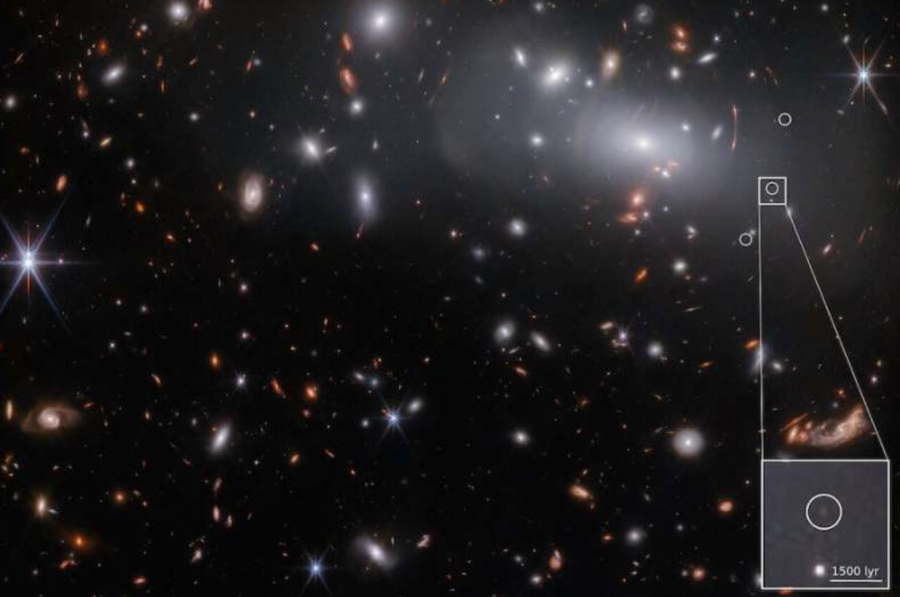Webb #3
Small but mighty, an ancient galaxy was recently discovered by the James Webb Space Telescope. The study, administered by a team at the University of Minnesota Twin Cities, peered far into the universe’s history, relaying a galaxy that formed only 510 million years after the Big Bang. Currently, the universe is 13.7 billion years old, meaning this celestial object formed quite early in its history.
Detecting these hidden gems is precisely what Webb was made for. Hayley Williams, one of the researchers on the team, stated “The James Webb Space Telescope has this amazing capability to see extremely far into the universe.” In addition to its huge primary mirror, the telescope’s infrared instruments enable it to see longer wavelengths than visible light, resulting in an immense level of sensitivity that was crucial to this study.
Despite its early appearance, astronomers are also fascinated by this galaxy because of its size, or lack thereof. Having a radius one thousand times smaller than the Milky Way, this galaxy is one of the tiniest astronomers have found at such a distance from Earth. In fact, it’s so small, it would’ve been extremely hard to detect if not for gravitational lensing. This is a phenomenon where large amounts of mass bend light to an observer. In the image above, you can see this in the top right as galaxies have been smudged and curved in response to the mass centered at the bright spot. In the case of this galaxy, gravitational lensing magnified it, increasing its brightness by a factor of 20.
In addition to its minuteness and age, this galaxy gets even more exciting. Despite its small size, it’s churning out stars at a terrifying pace. Williams states that “This galaxy is about one thousand times smaller than the Milky Way, but it’s producing stars at about the same rate.” Given this, astronomers are excited about the potential it raises. For example, Patrick Kelly, another researcher on the team, states this galaxy can help astronomers understand how stars managed to form in a hot, dense, infant universe. Additionally, he explains that the early galaxy’s high output supports the notion that star formation is winding down.
Yet, any future research or theories this study supports is sure to be exciting. James Webb has astronomers sitting at the edge of their seats because of the unique discoveries, like this one, that are waiting around the corner.
(he/him/his)
Roshan Mehta is a senior at Shaker High School, and this is his third year participating in the Bison. In the club, he serves as a writer...


